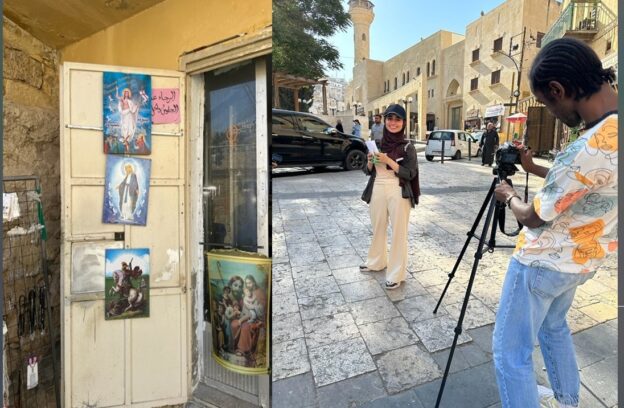From 2018 to 2022, along with Open University colleagues John Wolffe and Stefanie Sinclair, and scholars and stakeholders across Europe, I was part of the Horizon2020 project ‘Religious Toleration and Peace’ (RETOPEA). The purpose of the project was to explore historic examples of historic religious diversity and coexistence, and to engage young people with this research through a process of creative learning, called the ‘docutube’ methodology. These are short films, scripted, filmed and edited by young people (in schools, youth clubs etc.), which make connections between religious toleration and peace in historical contexts, the present day and their own experiences. So often, we found, European young people tended to assume that the ‘religious past’ was one of intolerance, antagonism, and violence. The point of RETOPEA was to raise awareness of historic ‘counternarratives’ of religious coexistence and peacebuilding.
In September 2023, along with Research Associate Dr Katelin Teller we took the ‘docutubes’ methodology outside of Europe, and to a Muslim majority context, for the first time. Our partner on the ground was the Royal Institute of Inter-Faith Studies (RIIFS) in Amman, an institution which promotes research and engagement in the area of religious diversity. The group of young people were aged 18-22 and each from a Muslim background. At the beginning of the workshop, we examined historic sources on religious coexistence in Jordan and the Middle East more widely. We looked at the significance of the figure of Saint George and Al-Khadar amongst Christians and Muslims, including examples of multi-religious space and popular religious practice in relation to this figure, for example as described by the Muslim geographer al-Muqaddasi (946-1000) in Lod. We looked at religious clothing in Jordan, for instance where local Catholic priests had dressed similarly to Bedouin. We examined too the Amman Message, a statement on diversity and unity in the Muslim world, which RIIFS had a major role in putting together.
Once young people had engaged with wider themes of religious coexistence, we visited the city of As-Salt. Here they were able to visit both Catholic and Orthodox churches, a marketplace used by both communities, and interview religious leaders in a city which has a long reputation for ‘everyday’ peaceful coexistence between Christians and Muslims. Here, the young people filmed their docutubes, drawing on their previous day’s thinking on historic sources and their observations of the material examples of religious diversity in the city.
The point of making docutubes is to enable deep, creative learning. Rather than give the young people historical ‘facts’, we seek to give them the chance to engage with historical sources and material environments. The insightful nature of the young peoples’ films, which will soon be made available (in Arabic, with English subtitles) at www.retopea.eu, indicates the potential of this approach.

